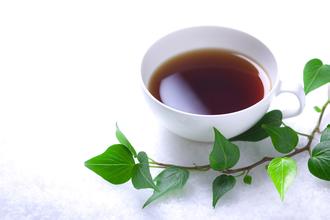Introduction to the characteristics of flavor varieties in Aldu Mara Coffee Manor with strong sweetness
Introduction to the variety and quality of high-quality coffee beans
Mexican coffee has a strong low taste, rich aroma, although slightly bitter but very mellow, has a unique and strong flavor, is a wonderful product of afternoon tea, should be carefully tasted. It is also the best choice for mixing other coffees and the first sip of coffee that beginners should taste. It is best to drink Mexican coffee while it is hot (about 75 °C). After an hour of hot coffee, all the aroma will be gone. If the coffee liquid is not filtered, be careful not to stir it into the coffee grounds, just like a slowly aged wine, not only to taste it, but also to rejoice that its color, non-alcoholic Mexican coffee is often paired with milk. Heat a cup of milk, a teaspoon of cinnamon powder and a teaspoon of vanilla powder in a pot at medium temperature, not too hot, and do not boil the milk. Then add the cocoa powder, fully dissolve and stir well. If you like chocolate, you can use chocolate paste instead of cocoa powder and milk. Let the milk dry for about 5 minutes, wait until the milk is slightly cool, then pour into the prepared coffee, decorate the coffee surface with cold cream, then decorate with a piece of cinnamon, and the Mexican coffee is ready. The aromas of chocolate and cinnamon blend together to give off the smell of desert. Tasting such a cup of coffee, it is as if you are walking through the vicissitudes of the desert after the workers have picked the coffee beans and put them in a special house with ventilation on all sides. About a week later, the coffee beans are packed in a loosely packed bag so that the wind can blow through the bag. After about seven weeks, the coffee beans changed color and taste. Finally, these coffee beans are selected manually, and the coffee beans of high quality are selected and officially bagged for preservation.
Mexicans are optimistic and enthusiastic, and it can also be seen from their coffee that the mellow Mexican coffee is not only loved by the native people, but also praised by many coffee connoisseurs. There are many ways to taste Mexican coffee, mainly divided into alcoholic and non-alcoholic two categories of practices: plateaus and mountains, with an annual average temperature of 25 ℃; the Mexican plateau has a mild climate all the year round, and the territory is mostly plateau topography, with no cold winter, no hot summer, and evergreen trees in four seasons, so it enjoys the laudatory name of "Pearl of the Plateau". Due to geographical and climatic reasons, the coffee growing area in Mexico is close to Guatemala, and the main producing areas are Cora Begu and Aluca states. Most of the products are washed beans produced in the highlands, with a good aromatic and sour taste.
The selection of Mexican coffee is generally carried out manually. The main basis for selection is according to the fullness of coffee particles, whether it is uniform, and then grade it. Generally speaking, coffee with full and uniform grains is easier to preserve. Only the fullest and most evenly grained coffee beans can be roasted to represent the best and finest coffee in the country, but with a climate suitable for coffee growth, excellent coffee varieties, excellent soil, and high-altitude planting areas, why is the quality of coffee in Mexico not satisfactory?
A few days ago, when I went to Mexico, some colleagues jokingly called Mexico popcorn coffee. The quality of the raw beans exported by Mexico was not good, and the raw beans bought were sometimes mixed with a little corn and sand. If the corn is not picked clean and mixed with raw beans into the roaster, it will really become popcorn. But now the quality of raw beans exported from Mexico has been greatly improved, and the mixing of corn kernels has been a story for many years. Corn was cultivated by the ancient Indians of Mexico, so Mexico is known as the "hometown of corn", and corn is also the main crop in Mexico. Coffee in the drying process is not fine enough to mix with corn kernels. This explains why corn is mixed with corn. From this matter, it is not difficult to find that the root cause of the unsatisfactory overall quality of Mexican coffee lies in the follow-up production processing.

Important Notice :
前街咖啡 FrontStreet Coffee has moved to new addredd:
FrontStreet Coffee Address: 315,Donghua East Road,GuangZhou
Tel:020 38364473
- Prev

Introduction to the variety flavor and taste of Galapagos Coffee Manor with a hint of flowers and fruit.
The Galapagos archipelago is now designated as a national park by Ecuador and listed as human property by UNESCO. It is far from land and largely avoids the impact of human behavior on nature. In order to maintain the local natural ecology as much as possible, Ecuador legally forbids the use of all kinds of artificial fertilizers, herbicides and pesticides, so Galapago
- Next

Introduction to the characteristics of Kenyan Jinchu Coffee with Fruit Flavor
The coast of China Coffee Network is plain, and most of the rest are plateaus with an average elevation of 1500 meters. The East African Rift Valley, Mount Kenya, the highest peak in Kenya, the eastern branch of Mount Kenya cuts across the north and south of the plateau, dividing the highland into east and west. The bottom of the Great Rift Valley is 450 mi 1000 meters below the plateau, 50 mi 100 km wide, with lakes of different depths and many standing.
Related
- Detailed explanation of Jadeite planting Land in Panamanian Jadeite Manor introduction to the grading system of Jadeite competitive bidding, Red bid, Green bid and Rose Summer
- Story of Coffee planting in Brenka region of Costa Rica Stonehenge Manor anaerobic heavy honey treatment of flavor mouth
- What's on the barrel of Blue Mountain Coffee beans?
- Can American coffee also pull flowers? How to use hot American style to pull out a good-looking pattern?
- Can you make a cold extract with coffee beans? What is the right proportion for cold-extracted coffee formula?
- Indonesian PWN Gold Mandrine Coffee Origin Features Flavor How to Chong? Mandolin coffee is American.
- A brief introduction to the flavor characteristics of Brazilian yellow bourbon coffee beans
- What is the effect of different water quality on the flavor of cold-extracted coffee? What kind of water is best for brewing coffee?
- Why do you think of Rose Summer whenever you mention Panamanian coffee?
- Introduction to the characteristics of authentic blue mountain coffee bean producing areas? What is the CIB Coffee Authority in Jamaica?

